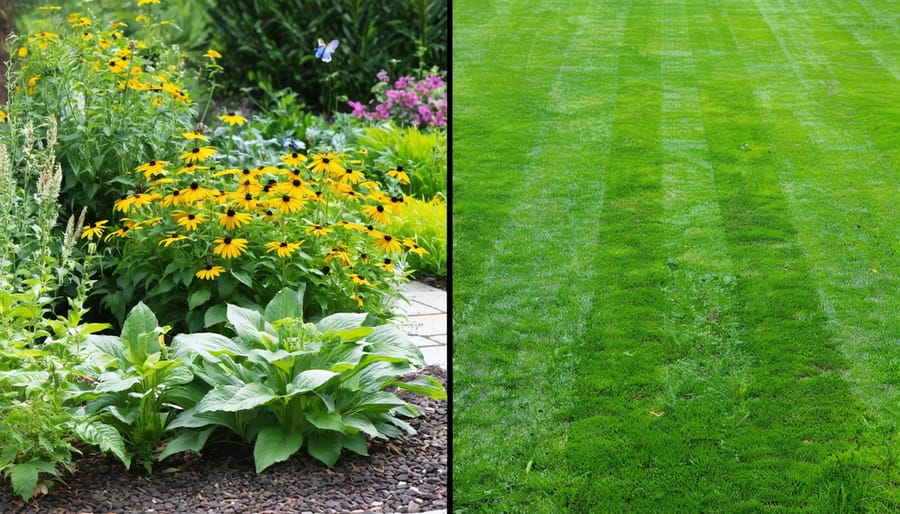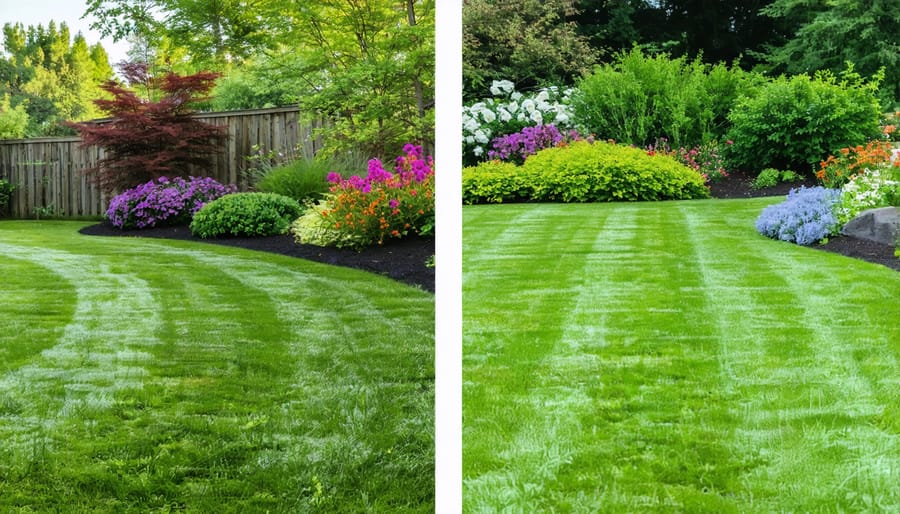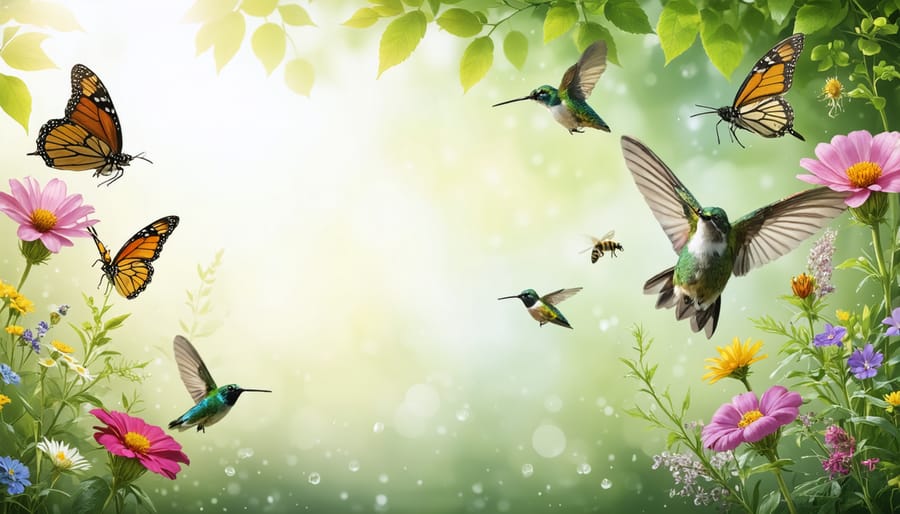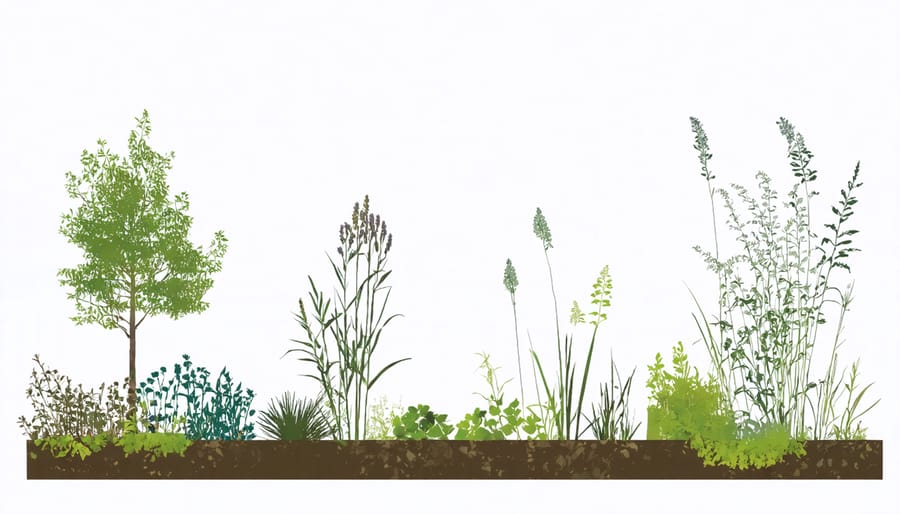Native Plants Transform Your Yard into a Low-Maintenance Paradise

Transform your landscape into a thriving, sustainable ecosystem by embracing native plants that have evolved perfectly for your local environment. Native plant landscaping slashes maintenance costs while creating a vibrant haven for local wildlife, from busy pollinators to melodious songbirds. Beyond their natural beauty, these indigenous plants require significantly less water, fertilizer, and pesticides than exotic varieties, making them an environmentally responsible and budget-friendly choice for modern homeowners.
Native landscaping delivers remarkable returns on investment through reduced lawn care expenses, enhanced property values, and improved ecosystem health. These plants develop deep root systems that prevent soil erosion, filter groundwater, and withstand local weather extremes with minimal intervention. For homeowners seeking a beautiful, low-maintenance yard that supports local biodiversity while cutting down on resource consumption, native plants offer an unmatched combination of practical benefits and natural elegance.
Slash Your Maintenance Time and Costs
Water-Wise Winners
Native plants are nature’s champions when it comes to water-efficient landscaping. These local heroes have evolved over thousands of years to thrive in your region’s specific climate conditions, making them incredibly efficient water users. Unlike their thirsty exotic counterparts, native plants typically develop deep root systems that help them access groundwater and survive with minimal irrigation once established.
Many homeowners report cutting their water bills by 30-60% after switching to native plants. Take the Black-Eyed Susan or Purple Coneflower, for example – these beautiful natives can flourish with rainfall alone in most regions. Their natural adaptation to local precipitation patterns means you can significantly reduce or eliminate supplemental watering, especially after the first growing season.
During drought conditions, native plants prove their worth by staying resilient while conventional landscaping struggles. Their water-wise qualities don’t just save money – they also help protect local water resources and maintain your garden’s beauty even during water restrictions. This practical approach to landscaping creates a sustainable, low-maintenance environment that looks great year-round while being kind to both your wallet and the environment.

Naturally Resistant to Local Pests
Native plants have evolved alongside local insects and diseases for thousands of years, developing natural defenses that make them remarkably resilient to regional pests. Unlike exotic plants that may require extensive chemical treatments to survive, native species have built-in resistance mechanisms that help them thrive without artificial intervention.
This natural immunity means you’ll spend less time and money fighting pest problems in your garden. For example, many native flowering plants produce specific compounds that deter harmful insects while attracting beneficial ones that help control pest populations. Native oaks support beneficial wasps that naturally control caterpillar populations, while native perennials often have tough leaves that resist common garden pests.
Additionally, native plants typically have deeper root systems and stronger immune responses to local plant diseases. This inherent strength means they’re less likely to succumb to common garden ailments that frequently plague non-native species. By choosing native plants, you’re essentially working with nature’s own pest control system, reducing the need for chemical pesticides and creating a more balanced, sustainable landscape.
Create a Thriving Backyard Ecosystem
Supporting Local Pollinators
Native plants play a crucial role in supporting local pollinators, creating a vibrant ecosystem right in your backyard. These plants have evolved alongside local bee species, butterflies, and other beneficial insects, providing them with the exact nectar and pollen they need to thrive. By incorporating native flowers, shrubs, and trees into your landscape, you’re essentially setting up a natural feeding station for these essential creatures.
When pollinators have access to native plants, they’re more likely to establish permanent colonies in your area, leading to better pollination of your vegetable garden and flowering plants. Native plant gardens can support up to four times more beneficial insect species compared to landscapes with non-native plants. This increased pollinator activity not only helps your garden flourish but also contributes to the broader environmental health of your community.
Consider creating a diverse selection of native plants that bloom at different times throughout the growing season. This ensures a consistent food source for pollinators from early spring through late fall, making your yard a reliable habitat for these important insects all season long.

Natural Bird Sanctuary
Transform your yard into a vibrant bird sanctuary by incorporating native plants into your landscape design. Local birds have evolved alongside these plants for generations, creating natural relationships that benefit both species. Native trees, shrubs, and flowers provide essential food sources through their berries, seeds, and nectar, while also attracting insects that birds feed on.
Many native plants offer perfect nesting spots and protective cover for birds throughout the year. Berry-producing shrubs like elderberry and winterberry holly not only add beautiful color to your garden but also provide crucial nutrition during harsh winter months. Tall native grasses and dense shrubs create safe spaces for birds to build nests and hide from predators.
By planting native species in layers – from ground covers to tall trees – you’ll create a diverse habitat that attracts a wider variety of bird species. Cardinals, chickadees, and goldfinches are just a few of the beautiful visitors you might spot in your yard. The constant movement and cheerful songs of these feathered friends add another dimension of natural beauty to your outdoor space while helping maintain a healthy local ecosystem.
Year-Round Visual Appeal
One of the most captivating aspects of native plants is their ability to create stunning visual displays throughout the year. Unlike some non-native species that may only shine during specific seasons, indigenous plants have evolved to provide year-round interest in your landscape. Following proper year-round garden planning principles with native plants ensures your yard remains vibrant across all seasons.
Spring brings forth delicate wildflowers and emerging foliage, while summer showcases bold blooms that attract butterflies and hummingbirds. As autumn approaches, many native plants transform with spectacular fall colors, and their seed heads create interesting architectural elements. Even winter holds its charm, with ornamental grasses standing tall against the snow and evergreen natives providing structure and color during the coldest months.
Native plants often feature interesting bark patterns, berries, and dried flower heads that add texture and visual interest when other plants go dormant. Species like Red Twig Dogwood display vibrant stems in winter, while native evergreens like Eastern Red Cedar maintain their rich green color year-round. The natural variation in height, form, and texture of native plants creates dynamic layers in your landscape that evolve with each passing season.
By selecting a mix of native plants with different blooming periods and seasonal characteristics, you can design a landscape that offers continuous visual appeal. This natural progression of colors and textures not only enhances your property’s curb appeal but also provides a constantly changing display that connects your garden to the rhythm of local ecosystems.
Getting Started with Native Plants
Finding the Right Plants
Finding the right native plants for your landscape starts with understanding your local ecosystem. Begin by researching plants that naturally grow in your region – these are already adapted to your climate, soil conditions, and rainfall patterns. Your local extension office or native plant society can provide valuable resources and plant lists specific to your area.
Visit native plant nurseries in your region to see these plants in person and discuss options with knowledgeable staff. Many nurseries offer expert guidance and can help you start your native garden with confidence. Take note of the growing conditions in your yard, including sunlight exposure, soil type, and moisture levels, as these factors will influence which plants will thrive in your space.
Consider using plant identification apps or local field guides to identify native plants you admire in natural areas. Local botanical gardens often maintain native plant sections that can provide inspiration and real-world examples of how these plants look in landscaped settings.
When purchasing, ensure plants are ethically sourced from reputable nurseries rather than collected from the wild. Many native plant societies host annual plant sales, offering an excellent opportunity to acquire local species while supporting conservation efforts. Remember to check the plant’s mature size and growth habits to ensure it fits your space requirements.
Integration Tips
Integrating native plants into your existing landscape doesn’t have to be an all-or-nothing approach. Start by identifying areas where current plants aren’t thriving or spaces that need refreshing. These spots are perfect opportunities to introduce native species gradually. Consider creating dedicated native plant beds alongside your existing garden areas, which allows you to maintain a cohesive look while reaping the benefits of both.
Layer your plantings by height, with taller native shrubs or small trees at the back, medium-height perennials in the middle, and ground covers in front. This creates visual interest while maintaining a polished appearance. When selecting native plants, choose varieties that complement your existing color scheme and bloom at different times to ensure year-round appeal.
Mix native grasses with traditional border plants for a natural transition between different garden areas. These grasses add movement and texture while requiring minimal maintenance. Consider replacing high-maintenance turf areas with native groundcovers or creating pocket meadows in sunny spots.
For a seamless integration, use native plants in familiar landscape designs. For example, create a traditional flower border using native alternatives to common garden favorites. Place native flowering plants near your patio or entrance where their beauty can be appreciated up close, and their benefits to pollinators can be observed.
Remember to maintain clean edges and defined borders between native and conventional plantings to keep the landscape looking intentional and well-maintained. This approach helps satisfy both ecological goals and aesthetic preferences while gradually transforming your yard into a more sustainable landscape.

Embracing native plants in your landscaping isn’t just a trend – it’s a smart, sustainable choice that benefits both your property and the environment. By choosing plants that naturally thrive in your region, you’ll save time and money while creating a vibrant, low-maintenance landscape that supports local wildlife. The reduced need for water, fertilizers, and pesticides means you’ll spend less time maintaining your yard and more time enjoying it. Whether you start with a small garden bed or transform your entire yard, every native plant you add makes a positive impact. Take the first step today by visiting your local nursery and exploring the beautiful native options available for your area. Your yard – and the environment – will thank you for making this earth-friendly choice.

